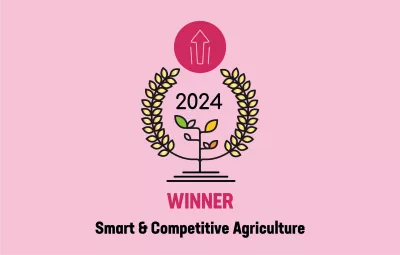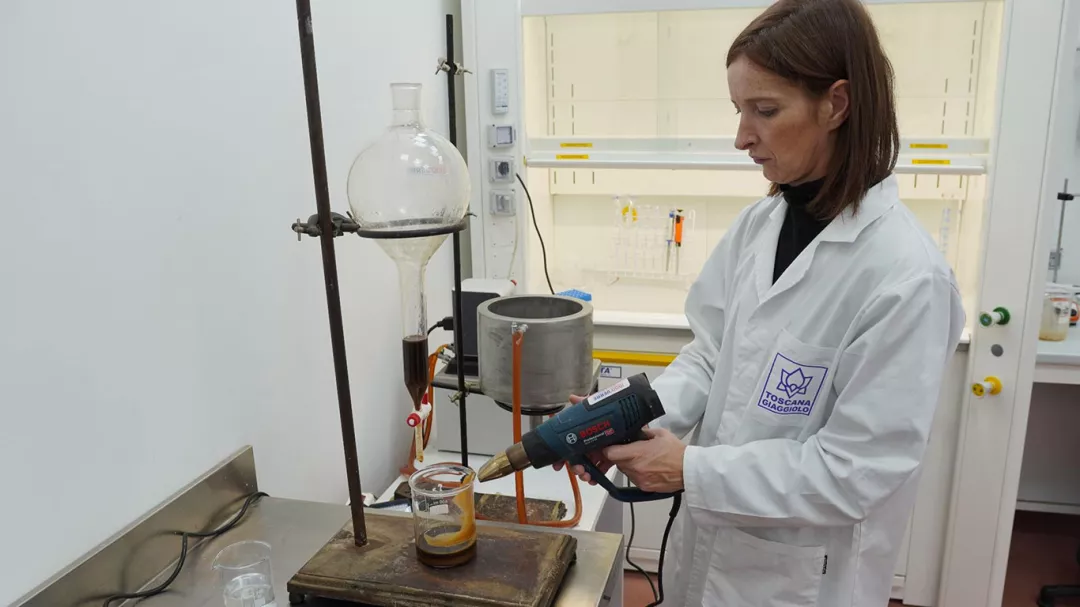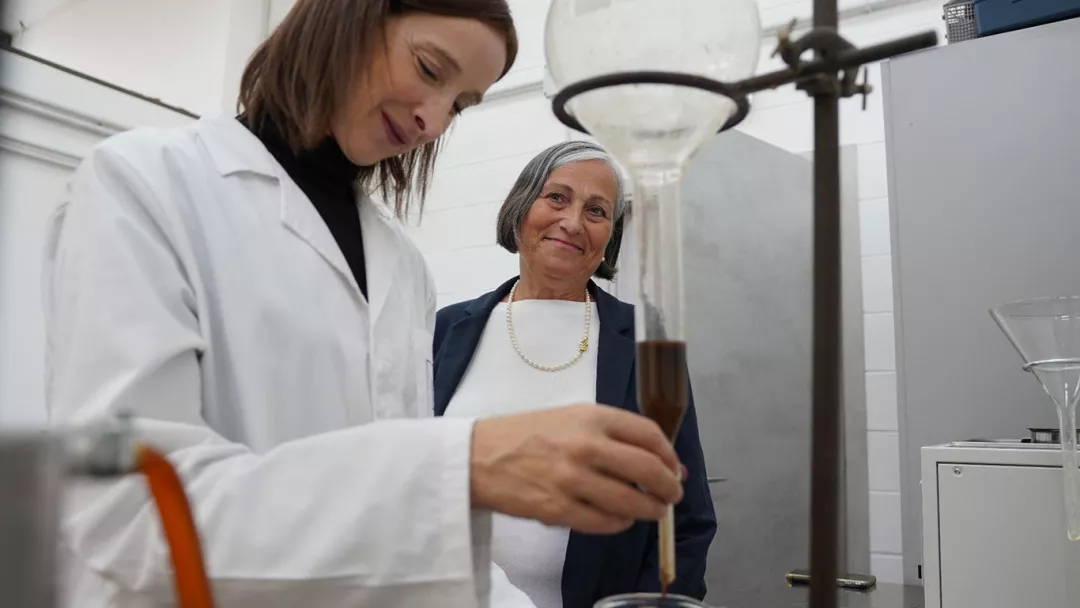General information
RDP Priority
- P3. Food chain and risk management
RDP Focus Area
- 3A: Agri-food chain integration & quality
RDP Measure
- M01: Knowledge transfer & information actions
- M04: Investments in physical assets
- M16: Cooperation
Beneficiary type
- Small-Micro Enterprise
Summary
The project focused on the cultivation of iris, a flower with significant historical and cultural value in Tuscany's agricultural tradition. Iris has been featured in Florence's coat of arms since around 1000 CE and is used in food products, cosmetics and perfumes.
The project aimed to enhance processing and transformation procedures, boost market opportunities and profitability for producers and establish sustainable and resilient conditions. This would enable cultivation and transformation activities to drive the rural economy, benefiting future generations while preserving the distinctive landscape features associated with the iris.
In collaboration with 120 producers and the University of Florence, new stages of processing were introduced which were not managed before the project, such as distillation and quality control. As a result, growers can now sell their products directly to cosmetic companies instead of intermediaries, improving their position in the value chain. This improvement has increased the profitability of agricultural activities with a 35% increase in the selling price of the product , enhanced the development prospects of the supply chain by meeting higher demand from transformation activities and strengthened the economy of the entire rural area. The cooperative which led the project has also increased its membership by two-thirds.
Results
Infrastructure:
- Construction of processing plant, including mill, steam boiler, distiller and bagging machine.
- Machinery and equipment acquired for iris production.
- Creation of a dedicated analysis laboratory.
Quantitative benefits:
- 35% increase in the selling price of the product.
- Creation of new jobs and increase in cooperative employees. Currently one full-time employee and three full-time workers, with plans to expand the workforce.
- Increase in cooperative members from 74 to 123, particularly among young people.
- Annual transport reduction to 52 kg of processed product, down from 150 quintals, resulting in significant environmental benefits (CO2 reduction).
- Establishment of three exclusive contracts with companies.
Qualitative benefits:
- Dissemination of results through two conferences and eight thematic meetings.
- Rationalisation of analysis methods.
- Enhanced analytical techniques.
- Revitalisation of the production chain.
- Improved transformation processes.
- Implemented environmentally sustainable techniques.
- Improved quality of final product.

Promoter
Toscana Giaggiolo Cooperative
Funding
Total budget: 902 286 (EUR)
EAFRD: 195 611 (EUR)
National: 180 641 (EUR)
Regional: 77 391 (EUR)
Private/Own funds: 448 643 (EUR)
Ressourcen
Documents
Context
The project is led by Toscana Giaggiolo, Italy's largest agricultural cooperative specialising in iris rhizome production and sales. Over 120 companies, including many young farmers, are involved in the initiative.

Previously, the cooperative focused solely on traditional iris cultivation. Growers sold only unprocessed raw materials (dried rhizomes) at predetermined quantities and prices set by processing companies, missing out on much of the final value captured by the cosmetics industry. With funding from the Rural Development Programme (RDP), the cooperative constructed Italy's first specialised distillation unit and established an analysis laboratory. This innovation allows cooperative members to oversee the entire process (from cultivation to rhizome distillation), achieving a 35% higher price per kilogram and ensuring fairer compensation.
The project has highlighted the quality of local cultivation and processing methods, expanded production to meet increased market demand and improved the profitability of the participating businesses. It has revived local agricultural traditions, creating events and initiatives that promote the rural area for tourism, showcasing a lesser-known side of Tuscany.
Increased product profitability has motivated growers to reinvest in iris plantations, attracting new members, many of whom are young, to the cooperative. This reinvestment ensures the sustainability and growth of the iris cultivation tradition in Tuscany. Overall, the project not only enhances the economic viability of iris farming but also preserves and promotes the cultural heritage associated with it. By fostering cooperation between farmers and integrating advanced processing techniques, the initiative has strengthened the local economy and created new opportunities for future generations in the agricultural sector.
Objectives
The project aimed to improve company production, cultivation practices and the quality levels of the final product. This in turn would increase company profitability and strengthen the iris supply chain, creating market advantages. Further down the line, improvements of this kind would support job creation and generational renewal, help revitalise rural areas and underpin the sustainability and resilience of the rural economy.
Another goal was to help with the protection of biodiversity and contribute to environmental benefits. Overall, the project had a strong emphasis on landscape maintenance.
Activities

The project began in 2018 with the creation of the partnership and the identification of project objectives. The team then analysed the production process to identify possibilities for improvement and/or the introduction of new phases (distillation and quality control), possible uses of the product and its market outlets, and the critical factors and opportunities of the supply chain.
In practical terms, the first step was the new distillation unit, which was designed and then built specifically to carry out the activities envisaged by the project. It is a new machine that did not exist on the market and is the only distiller in Italy for iris distillation.
The cooperative also acquired equipment for iris production, including machinery for cultivation and harvesting phases (tractors, rototillers, trailers, rippers, etc.), a steam boiler, bagging machine, mill, distiller and analysis laboratory. The introduction of the distiller enabled the cooperative to incorporate a new processing phase within its premises, adding a new stage to the production chain.
This was followed by the establishment of the analysis laboratory. A warehouse owned by the cooperative was divided up and a suitable room for the analysis laboratory was created and appropriately equipped. Importantly, a new PC was purchased, as well as analysis equipment and a chemical hood for butter processing.
Analytical methods were optimised for both the iris flower and bulb, with new techniques developed to improve and enhance the characteristics of the product, both for cosmetics and liqueurs.
Quality control is conducted on two levels. The first involves monitoring iris production by the cooperative, which is certified by the Union of Ethical BioTrade (UEBT). The second involves the laboratory technician who performs qualitative and olfactory assessments of the extracted iris butter. Training on processing and transformation techniques was required for laboratory technicians and new members.
To promote the new initiative, two conferences and eight thematic meetings were held. Digital materials were disseminated through a network of partners and contacts developed among agricultural companies benefiting from training at CAICT (Centro Assistenza Imprese Coldiretti Toscana) and services provided by the Coldiretti Tuscany territorial network. Additionally, information was disseminated through the dedicated PIF website, the CAICT website and the Coldiretti Tuscany Facebook page.
Agreements were established with cosmetic companies for product sales and the project received recognition as a good practice by the independent evaluator of the Tuscany RDP and dissemination on the Tuscany Region website.
Main results
Perhaps the first gain was in terms of infrastructure. The project was responsible for the construction of a processing plant, including a mill, steam boiler, distiller and bagging machine, as well as acquiring machinery and equipment for iris production. Furthermore, a dedicated analysis laboratory was built solely for the project.
The quantitative benefits were significant. A 35 % increase in the selling price of the product has been brought about, and the establishment of three exclusive contracts with companies has enabled new jobs to be created and an increase in the number of cooperative employees. Currently, there is one full-time administrative employee and three full-time workers, with plans to expand the workforce. The number of cooperative members has increased from 74 to 123, with many of the new recruits being young people.
Before the construction of the distiller, around 150 quintals of raw material (rhizomes) had to be transported elsewhere for transformation every year. Now instead only the finished product needs to be transported for sale (52 kg), which significantly reduced CO2 emissions.
In terms of quality, the project has brought about a rationalisation of analysis methods and enhanced analytical techniques. In the field, it has revitalised the production chain and improved transformation processes while implementing environmentally sustainable techniques. In simple terms, it has improved the quality of the final product, all while empowering young entrepreneurs.
Key lessons
The key to the success of the pilot project was being highly innovative at both national and European level. This allowed for the enhancement, empowerment and optimisation of raw material processing capabilities through the development of new technologies and advanced laboratory techniques.
It was important to ensure that the network of farmers established over time is more competitive and modern, embracing a forward-thinking, entrepreneurial approach while retaining the traditional essence characteristic of rural areas in Tuscany and Italy.
It was also critical for the project to bring together numerous companies, fostering collaboration between old and new generations and maintaining the competitiveness of the product in the market.
Rossella Rabatti

